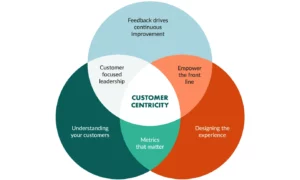Investing for the future can often feel like navigating a minefield, especially for my fellow millennials. With the landscape of investment opportunities constantly evolving, it’s crucial to adopt strategies that not only withstand the test of time but also adapt to our changing world. I’ve seen firsthand how the right approach can transform uncertainties into stepping stones towards financial freedom.
The journey towards long-term investment success is paved with patience, knowledge, and a keen eye for risk management. I’ll share insights into how adopting a long-term perspective can significantly impact your financial future. From understanding the importance of diversification to recognizing the power of compound interest, it’s all about making informed decisions that align with your goals. Let’s embark on this journey together, and I’ll guide you through the strategies that have stood the test of millennia.
Understanding the Investment Landscape
In my journey to decode the world of investing, I’ve come to realise the vastness of the investment landscape. It’s a terrain filled with myriad opportunities, but also replete with challenges that can test the acumen of even the most seasoned investors. One of the key pillars of mastering investment strategies, especially for millennials, is to truly understand this ever-evolving landscape.
Investment isn’t just about picking stocks or bonds; it’s about seeing the bigger picture. It’s crucial for investors, particularly those just starting out, to grasp how macroeconomic factors and global trends can significantly impact their portfolios. Despite these elements being beyond an individual investor’s control, there’s much that can be done to navigate successfully through these waters. Investing time in financial education is as invaluable as investing money itself. One can leverage investment apps UK based, online resources, or even seek expert insight to stay informed and make knowledgeable decisions.
The essence of a smart investment strategy lies in its adaptability. The global economy and the technological landscape are in a state of constant flux, thus affecting market dynamics in ways that are often unpredictable. For example, where once traditional metrics such as earnings and book value were the be-all and end-all in assessing a company’s worth, today, they may not fully capture a company’s potential in the face of digital transformation and new market entrants.
It has become evident that being well-versed in this changing environment is not just beneficial, but essential for long-term success. By staying informed and flexible, investors can adapt their strategies to mitigate risks and seize emerging opportunities. For millennials stepping into the investing world, taking the time to understand the investment landscape can pave the way for a more secure and prosperous financial future.
As I continue to navigate through the complexities of investing, I find that embracing the journey, with all its twists and turns, is part of the adventure. Armed with knowledge and the right tools, I’m learning to make informed decisions that align with my long-term financial goals.
Importance of Diversification in Long-Term Investing
One of my core beliefs revolves around the importance of diversification in crafting a resilient long-term investment strategy. It’s not just about spreading your investments across different assets; it’s about creating a safety net that can protect your portfolio from unforeseen market volatilities. Specifically for investors like myself, who are keen on navigating the complexities of the financial markets through the convenience of investment apps in the UK, diversification is not just a strategy, it’s a necessity.
The underlying principle of diversification is quite simple: don’t put all your eggs in one basket. But it’s more sophisticated than it initially appears. By allocating investments across various financial instruments, industries, and other categories, it’s possible to mitigate the risk of a significant loss if one investment underperforms. This strategy ensures that the performance of good investments can balance out the bad ones.
For millennials venturing into long-term investing, it’s vital to understand that diversification goes beyond just mixing stocks and bonds. It involves considering a range of asset classes such as equities, fixed income, real estate, and potentially even cryptocurrencies. Each asset class reacts differently to market conditions. While stocks may offer the potential for high returns, they often come with higher volatility. On the other hand, bonds generally provide lower returns but add a layer of stability to your portfolio.
Technology, and specifically the advent of investment apps in the UK, has simplified access to global markets, allowing young investors to easily diversify their portfolios internationally. Investing in markets across different geographies can offer exposure to economies with varying growth trajectories, which can be a hedge against domestic market declines.
Embracing diversification within your investment strategy is not about avoiding risk altogether; it’s about understanding and managing it in a way that aligns with your long-term financial goals. By diversifying, I’m not just protecting my investments from significant downturns; I’m also positioning my portfolio to capture growth from different sectors and geographies, maximising my chances of achieving a secure financial future.
Power of Compound Interest
When it comes to building wealth over the long term, there’s one concept I can’t stress enough – compound interest. It’s a game-changer, especially for millennials starting on their investment journey. I’ve seen firsthand how leveraging compound interest can significantly amplify an investment portfolio’s growth. It’s not merely about the investments you make but how long you allow them to grow. This fundamental principle is crucial in understanding why it’s important to start investing as early as possible.
I remember when I first started investing through various investment apps in the UK. The ease and accessibility of these platforms allowed me to begin with modest amounts, regularly contributing a portion of my income. Even when starting small, the magic of compound interest works tirelessly. It’s the principle that you earn interest on your interest, over time, which can turn seemingly modest savings into substantial sums.
To break it down with a simple illustration; let’s say I invest £1,000 with an annual return of 5%. In the first year, that’s an extra £50 in interest. But, compound interest means in the next year, I’m earning interest on £1,050, not just the initial £1,000. Over 20 or 30 years, this effect intensifies. The longer the investment period, the more pronounced the benefits of compounding, transforming small investments into significant wealth over time.
One of the key lessons I’ve learned is the importance of consistency and patience. Making regular investments, even in small amounts, and giving them time to grow, can lead to astonishing results thanks to compound interest. For those using investment apps in the UK, starting early and sticking with it can make a monumental difference in the long run.
In essence, compound interest embodies the concept of ‘time in the market beats timing the market’. While the allure of quick gains can be tempting, the steadfast and patient approach of compounding ensures a more secure and potentially rewarding investment journey.
Risk Management Strategies for Millennial Investors
In navigating the unpredictable waters of investing, it’s paramount for millennial investors like myself to equip ourselves with robust risk management strategies. Drawing from experience and insights into the landscape, I’ve identified key approaches that stand the test of volatile markets and ensure a steadier journey towards financial independence.
Diversification is my first line of defense. It’s not just about spreading investments across different assets; it’s about building a portfolio that can withstand market downturns. I’ve learnt that incorporating a mix of equities, bonds, and alternative investments minimises my exposure to any single economic event’s adverse effects. Investment apps in the UK have made diversification more accessible by presenting a plethora of options right at my fingertips, enabling me to make informed decisions promptly.
Another essential strategy is regular monitoring and rebalancing of my portfolio. Market dynamics shift, and so should my investment distribution. By keeping a vigilant eye, I can adjust my holdings to align with my long-term financial goals and risk tolerance. This practice of recalibration ensures that I’m not inadvertently taking on more risk than intended or missing out on potential opportunities for growth.
Determining an appropriate asset allocation plays a critical role in managing risk. This entails tailoring my investment choices to my specific financial situation and objectives. As a millennial, I possess the advantage of time, allowing me to lean towards assets with higher growth potential but also higher volatility. However, as my circumstances evolve, so too will my asset allocation, gradually shifting towards more conservative options to preserve wealth as I approach my financial goals.
By embedding these strategies into my investment approach, I fortify my financial future against the unpredictability inherent in the markets. Leveraging tools and resources available through investment apps in the UK, I’m better positioned to navigate the complexities of investing with confidence and clarity.
Navigating Market Volatility
In my journey through the investing world, one term I’ve come to respect deeply is market volatility. It’s the unpredictable movement of the market that can sometimes send investors into a tailspin. Understanding how to navigate this volatility is crucial, especially for long-term investment strategies.
One technique I’ve found invaluable is diversification. By spreading investments across various asset classes, such as stocks, bonds, and real estate, I minimize the impact of any single investment’s poor performance on my overall portfolio. Investment apps in the UK have made diversification more accessible to millennials by offering a wide range of investment options at our fingertips.
Another strategy I rely on is long-term planning. In the face of market fluctuations, it’s easy to make hasty decisions driven by fear or greed. However, it’s essential to remember that investing is a marathon, not a sprint. Staying focused on my long-term financial goals helps me to weather short-term market volatility without making impulsive decisions.
Regular portfolio monitoring and rebalancing also play a key role in navigating market volatility. I make it a point to review my investments periodically and rebalance them to ensure they align with my risk tolerance and investment objectives. This proactive approach allows me to adjust my investment strategy in response to changing market conditions and maintain a well-balanced portfolio.
By incorporating these strategies into my investing approach, I’ve learned to view market volatility not just as a risk, but as an opportunity. It’s a chance to buy quality assets at lower prices during market downturns and to benefit from the eventual market recovery. Embracing volatility, rather than fearing it, has been a game-changer in my investment journey.
Conclusion
Navigating market volatility isn’t just about survival; it’s about thriving. By embracing the strategies I’ve shared, you’re not only securing your financial future but also positioning yourself to take advantage of market lows. Remember, diversification, long-term planning, and regular portfolio reviews are your best allies in this journey. Let’s not view market fluctuations with fear but as opportunities to strengthen our investment portfolio. Armed with these strategies, I’m confident we can face market volatility head-on and emerge more robust, ready to reap the rewards of our patience and strategic planning.



































